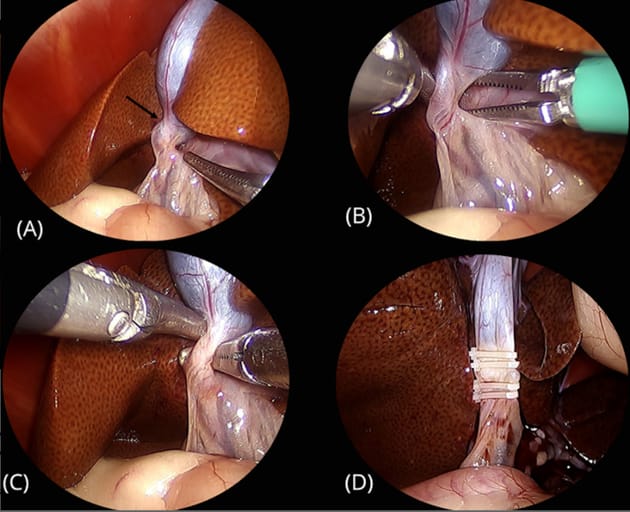- Veterinary View Box
- Posts
- You can do it in cats....
You can do it in cats....
Vet Surg. 2025
Edoardo Poggi 1, Francisco J Pérez Duarte 2, Juan Andrés Villagómez Herrera 3, Carlos Andrés Hernández López 4, David Garcia Rubio 5, Jorge Gutiérrez Del Sol 2, Francesca Izzo 1, Angelo Tapia-Araya 6, Francesco Piana 7
Background
Cholecystectomy, the surgical removal of the gallbladder, is an infrequent but sometimes necessary procedure in feline medicine. While laparoscopic cholecystectomy (LC) is well-established in humans and increasingly used in dogs, reports in cats are rare. This study aimed to describe the indications, surgical techniques, complications, and outcomes of LC in a cohort of cats, evaluating its feasibility and safety in feline patients.
Methods
A retrospective review included 22 cats that underwent attempted LC between 2018 and 2024. Data collected included signalment, clinical presentation, preoperative diagnostics, surgical procedure details, intraoperative findings, complications, and outcomes. LC was performed using a standardized three-port technique. Conversion to open surgery and reasons for conversion were documented. Postoperative complications were categorized as minor or major, and follow-up data were obtained from medical records and owner communications.
Results
LC was successfully completed in 18 of 22 cats (82%), while 4 required conversion to open surgery due to intraoperative challenges, such as hemorrhage or adhesions. Indications for surgery included gallbladder mucocele, cholecystitis, biliary obstruction, and rupture. The most common complication was bile peritonitis, occurring in both laparoscopic and converted cases. No intraoperative deaths occurred. Overall survival to discharge was 95%, with one postoperative death due to septic peritonitis. Most surviving cats had uneventful recoveries, and long-term follow-up indicated good quality of life.
Limitations
The study was retrospective, with a limited sample size and potential selection bias. Not all cats had uniform diagnostic or follow-up protocols, and the retrospective nature limited the standardization of surgical and postoperative management. Long-term outcomes were based in part on owner reports, which may introduce reporting bias.
Conclusions
Laparoscopic cholecystectomy is a feasible and generally safe procedure in cats, with success and complication rates comparable to those in dogs. The findings support LC as a viable minimally invasive option for gallbladder disease in feline patients, although careful case selection and surgical expertise are crucial. Further prospective studies are needed to confirm these results and refine technique.

Laparoscopic cholecystectomy (first part). (A) Laparoscopic visualization of the cystic duct (black arrow). (B) Initial dissection of the cystic duct and cystic artery with laparoscopic Maryland forceps. (C) Complete dissection of the cystic duct and cystic artery with laparoscopic right-angle forceps. (D) Visualization of the ligated cystic duct and cystic artery with 4 Hem-o-lok.
How did we do? |
Disclaimer: The summary generated in this email was created by an AI large language model. Therefore errors may occur. Reading the article is the best way to understand the scholarly work. The figure presented here remains the property of the publisher or author and subject to the applicable copyright agreement. It is reproduced here as an educational work. If you have any questions or concerns about the work presented here, reply to this email.